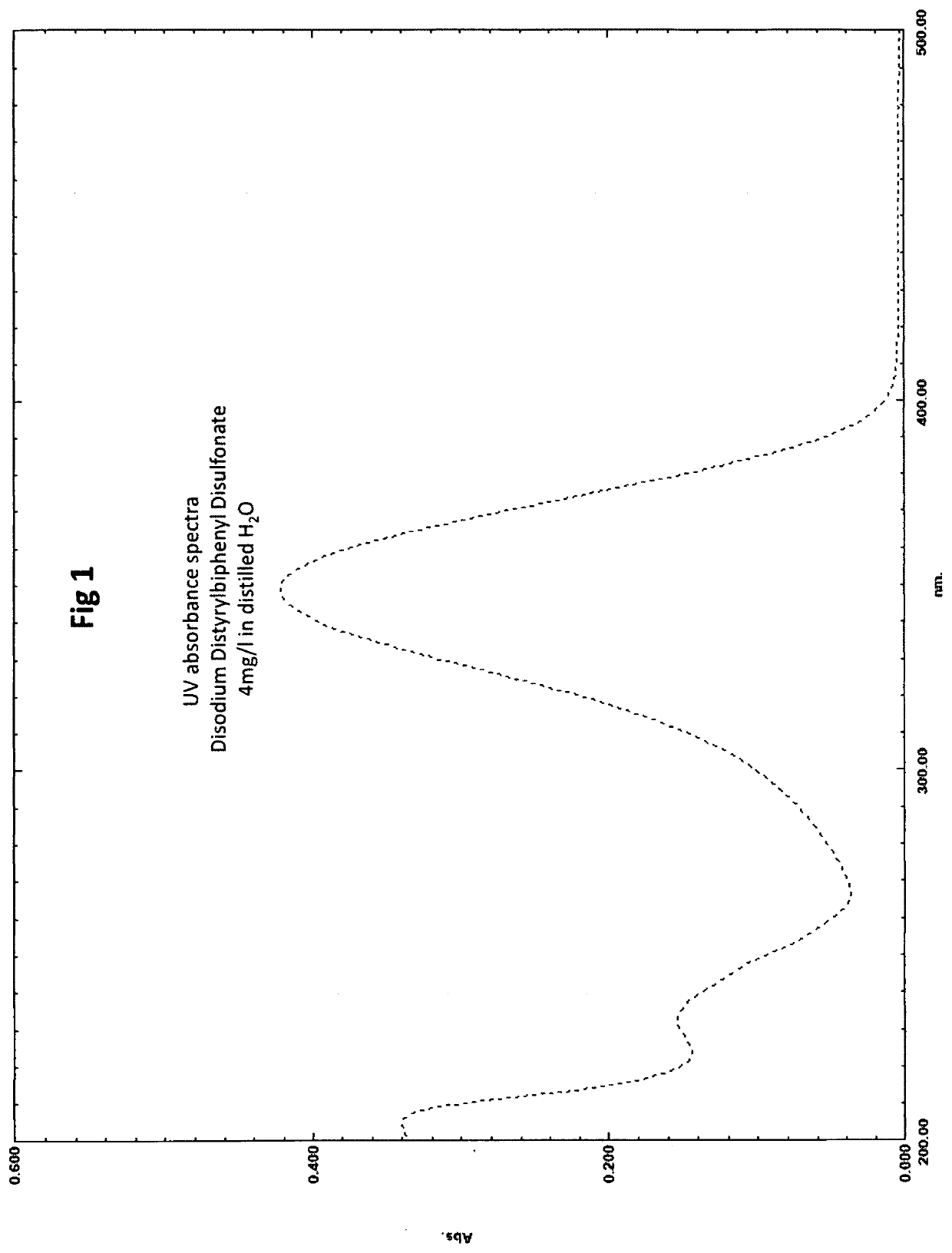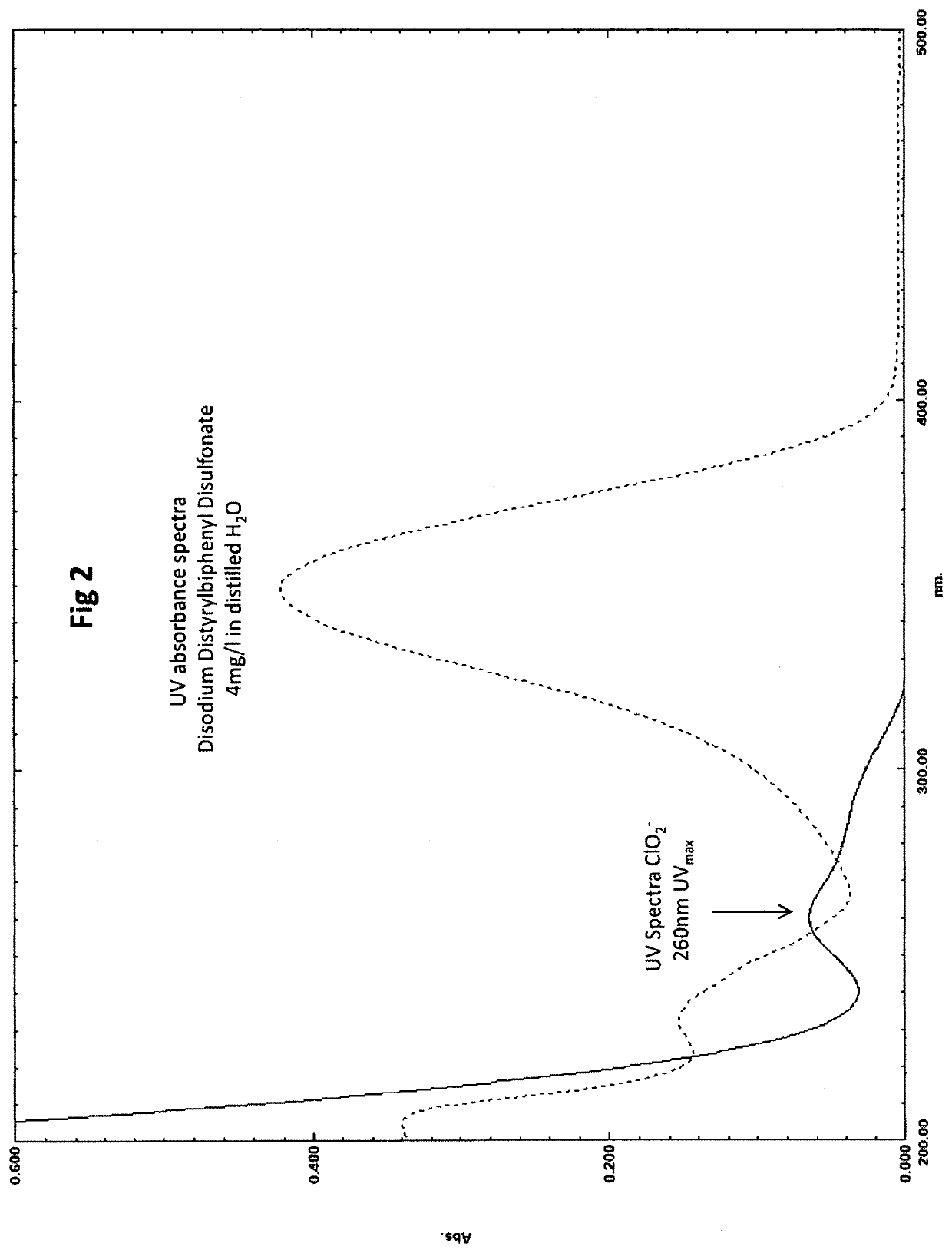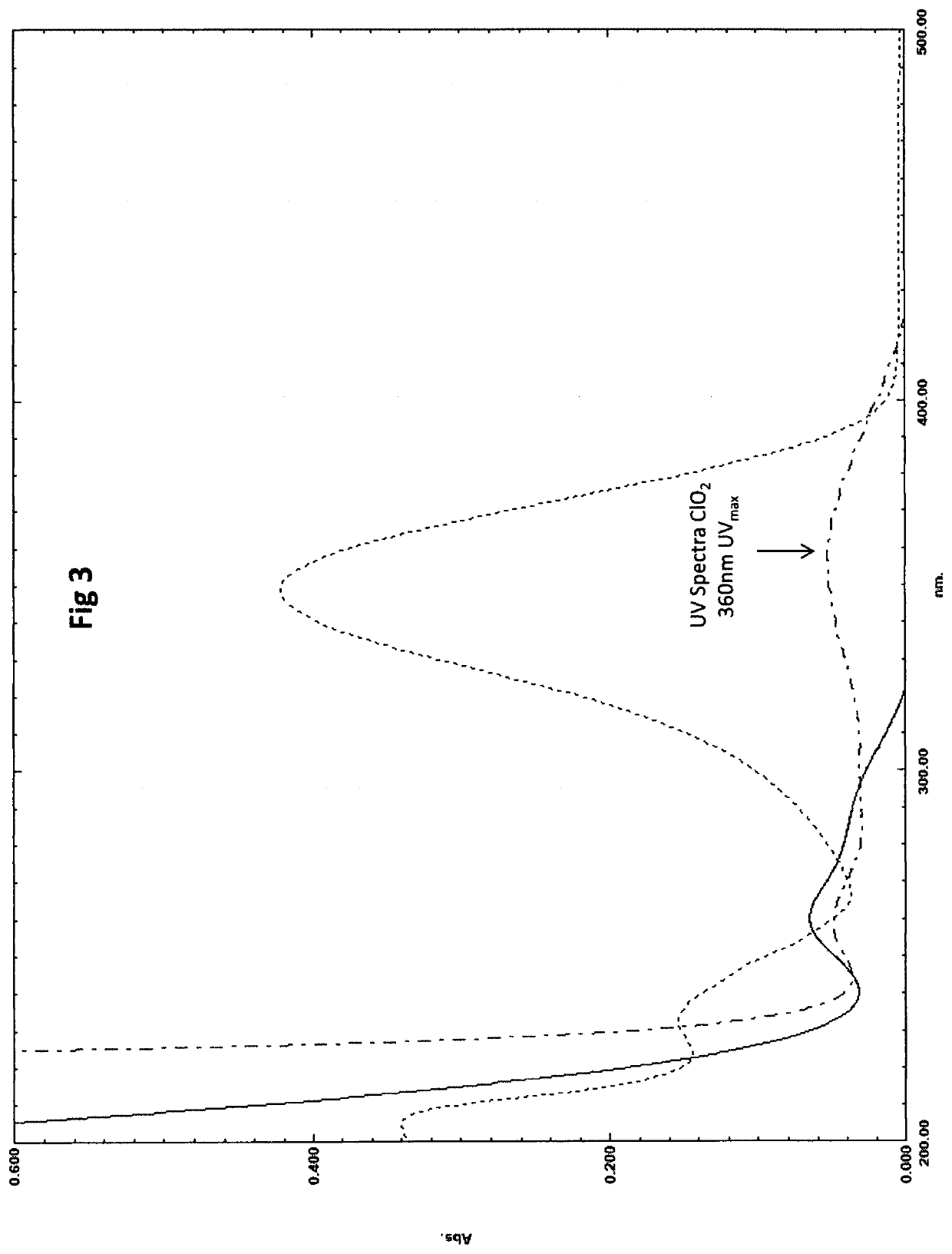Method for the ultraviolet stabilization of chlorine dioxide in aqueous systems
- Summary
- Abstract
- Description
- Claims
- Application Information
AI Technical Summary
Benefits of technology
Problems solved by technology
Method used
Image
Examples
Embodiment Construction
[0020]In one embodiment, disclosed is a method for treating an aqueous system with chlorine dioxide while exposed to sunlight, the method comprising: adding to the aqueous system an effective amount of UV absorbent and chlorine dioxide; inhibiting UV degradation of chlorine dioxide by absorbing UV with the UV absorbent; sustaining a chlorine dioxide concentration to obtain a Ct value, and wherein the Ct value is sufficient to achieve remediation.
[0021]In another embodiment, disclosed is a method for treating an aqueous system with chlorine dioxide while exposed to sunlight, the method comprising: adding to the aqueous system an effective amount of UV absorbent and chlorite donor; generating chlorine dioxide by UV decomposition of chlorite; inhibiting UV degradation of chlorine dioxide by absorbing UV with the UV absorbent; sustaining a chlorine dioxide concentration to obtain a Ct value, and
[0022]wherein the Ct value is sufficient to achieve remediation.
[0023]In yet another embodime...
PUM
 Login to View More
Login to View More Abstract
Description
Claims
Application Information
 Login to View More
Login to View More - R&D
- Intellectual Property
- Life Sciences
- Materials
- Tech Scout
- Unparalleled Data Quality
- Higher Quality Content
- 60% Fewer Hallucinations
Browse by: Latest US Patents, China's latest patents, Technical Efficacy Thesaurus, Application Domain, Technology Topic, Popular Technical Reports.
© 2025 PatSnap. All rights reserved.Legal|Privacy policy|Modern Slavery Act Transparency Statement|Sitemap|About US| Contact US: help@patsnap.com



